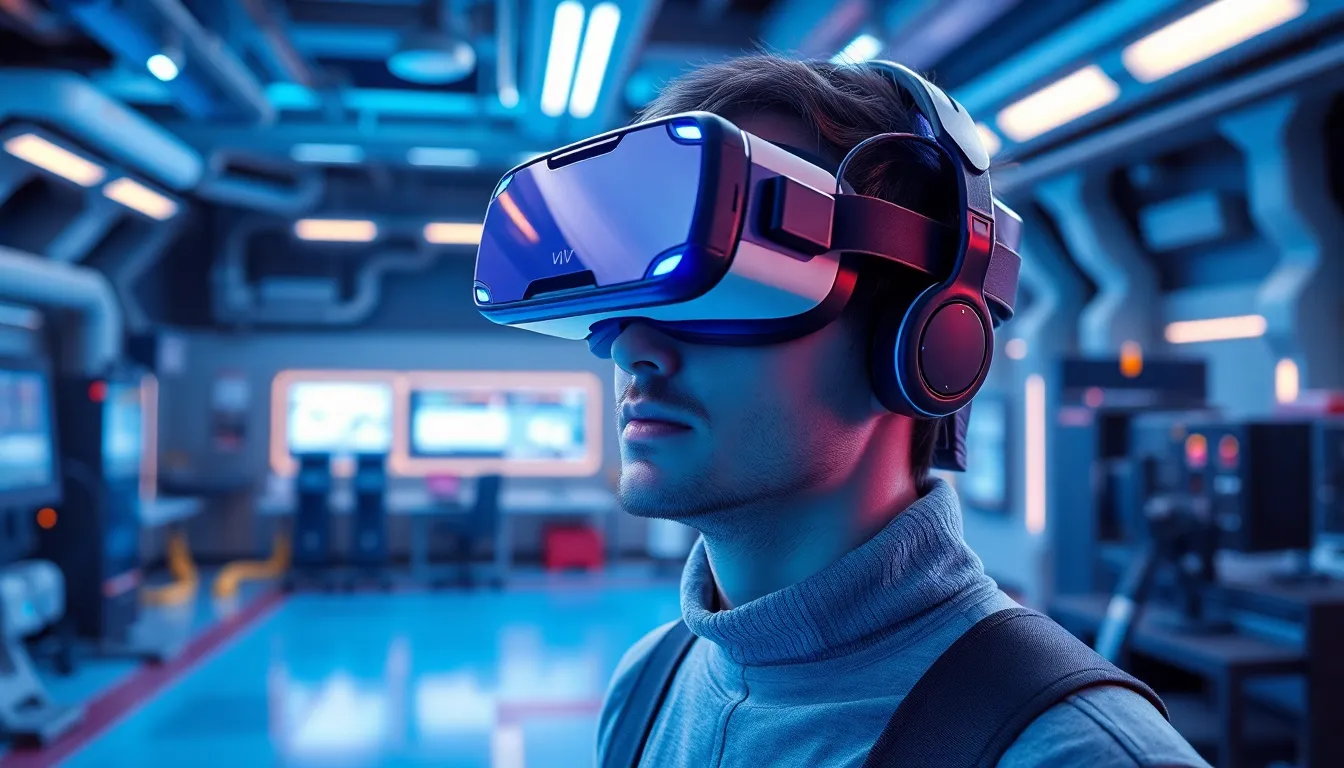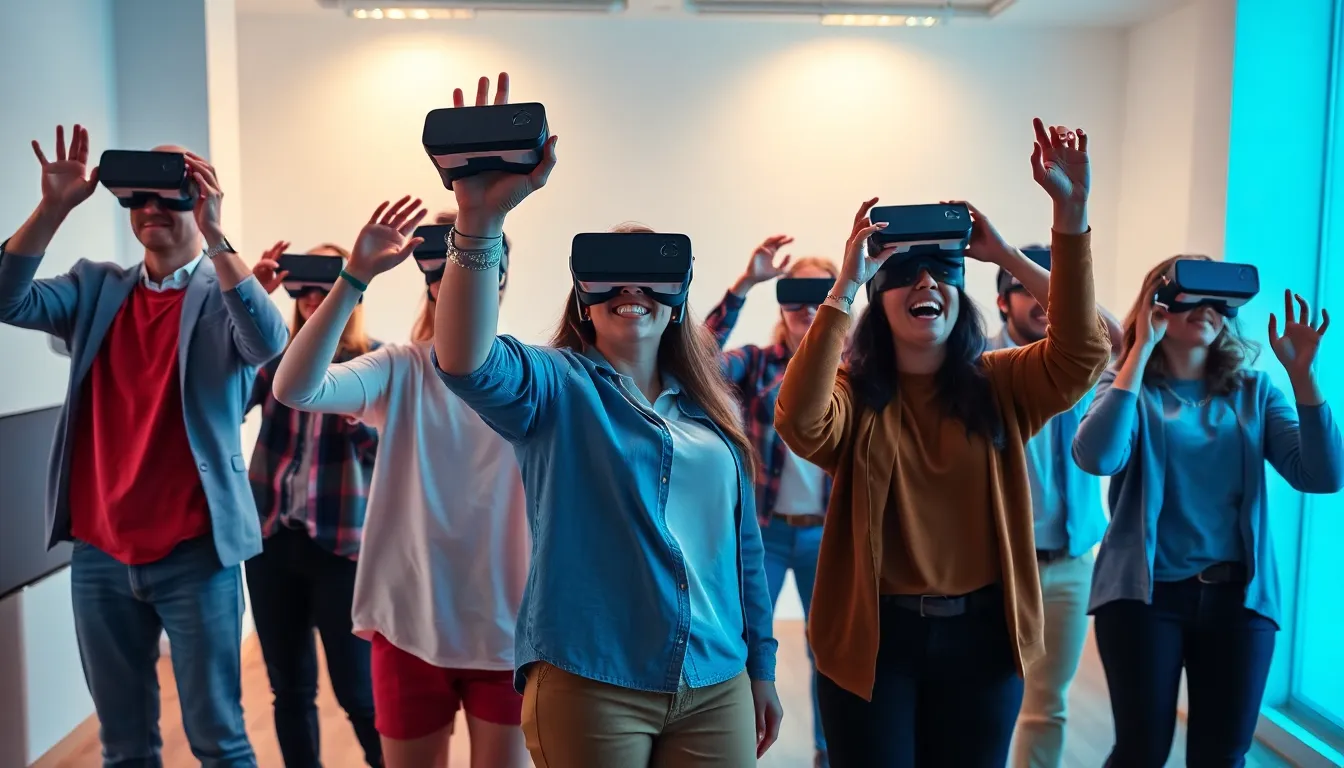Virtual reality software is transforming the way people interact with digital environments. As technology advances, these immersive experiences are no longer confined to gaming; they’re finding applications in education, healthcare, and even real estate. With the ability to create lifelike simulations, virtual reality software offers users a chance to explore new worlds and enhance their skills in ways that were once unimaginable.
The rise of VR technology has sparked a surge of interest among businesses and consumers alike. From training simulations that prepare employees for real-world challenges to virtual tours that allow potential buyers to explore properties from the comfort of their homes, the possibilities are endless. As this technology continues to evolve, understanding its capabilities and potential impact becomes essential for anyone looking to stay ahead in a rapidly changing digital landscape.
Table of Contents
ToggleOverview of Virtual Reality Software
Virtual reality software creates immersive experiences by simulating a realistic environment. Users interact with this environment using specialized devices like VR headsets, controllers, and gloves. The software processes input from these devices and adjusts the virtual environment accordingly, leading to engaging user experiences.
Several types of virtual reality software exist, catering to various sectors and applications:
- Gaming Software: Gaming VR software offers interactive entertainment experiences, with titles ranging from action games to educational simulations.
- Training Software: Training VR software enables realistic simulations for skills development, particularly in fields like healthcare, aviation, and the military.
- Real Estate Software: Real estate VR software allows potential buyers to explore properties through virtual tours, saving time and resources.
- Educational Software: Educational VR software enhances learning by providing immersive environments, facilitating understanding through hands-on experiences.
- Therapeutic Software: Therapeutic VR software supports mental health treatments, offering environments for exposure therapy and relaxation techniques.
Virtual reality software often combines interactive elements with visual and auditory feedback, designing environments that mimic real-world scenarios. Its adaptability drives innovation across various industries, presenting users with unique tools for engagement and learning. The increasing sophistication of VR software continues to expand its use cases, validating the technology’s significance in modern digital interactions.
Key Features of Virtual Reality Software

Virtual reality software includes several key features that enhance user experiences and applications across different fields. Notable elements include immersion, interactivity, graphics, and performance.
Immersion and Interactivity
Immersion and interactivity define the effectiveness of VR software. Immersion transports users into lifelike environments, making experiences feel real. Interactivity allows users to engage with virtual elements, creating a sense of agency. Features like hand tracking, voice recognition, and haptic feedback enhance user connection, facilitating seamless interaction within the simulated environment. Example applications include virtual classrooms where students can manipulate 3D objects and training simulations that allow professionals to practice skills in realistic scenarios.
Graphics and Performance
Graphics and performance affect the overall quality of VR experiences. High-resolution visuals and smooth frame rates contribute to realism, reducing motion sickness and enhancing user comfort. VR software employs advanced rendering techniques, such as real-time lighting and texture mapping, to create detailed environments. Optimized performance mitigates latency issues, ensuring responsive interactions. Leading VR platforms leverage powerful hardware and software integration to achieve high graphics fidelity and consistent performance, essential for applications in various sectors, including healthcare simulations and architectural visualizations.
Popular Virtual Reality Software Options
Numerous virtual reality software options cater to various user needs and applications. This section highlights three prominent software choices that illustrate the diversity in the VR landscape.
Oculus Software
Oculus software features applications designed for both entertainment and productivity. Popular titles include Oculus Home, which serves as the central hub for navigation, and Oculus Venues, allowing users to attend live events in virtual environments. The software supports VR gaming experiences like Beat Saber and Half-Life: Alyx, providing immersive gameplay. Oculus also offers development tools, such as the Oculus SDK, enabling creators to design their VR applications. Its integration with the Oculus Quest and Rift series enhances accessibility and user engagement.
SteamVR
SteamVR acts as a comprehensive platform for VR content, focusing primarily on gaming. This software supports a wide array of VR headsets, including HTC Vive and Valve Index, ensuring compatibility across devices. Users can access a library of games and experiences through the Steam Store, featuring popular titles like Boneworks and The Walking Dead: Saints & Sinners. SteamVR also emphasizes room-scale tracking, allowing users to navigate virtual spaces freely. Moreover, developers benefit from SteamVR’s extensive API, facilitating the creation of immersive applications.
PlayStation VR
PlayStation VR offers a tailored VR experience for PlayStation console owners. The software provides access to a diverse selection of games, including Astro Bot Rescue Mission and Blood & Truth, which take full advantage of the PlayStation hardware. Its user-friendly interface integrates seamlessly with the PlayStation ecosystem, enhancing accessibility for gamers. PlayStation VR also supports VR-specific features, such as motion controls and 360-degree experiences, enriching gameplay engagement. Additionally, developers can utilize the PlayStation VR SDK to create unique and interactive experiences tailored to the console’s capabilities.
Use Cases of Virtual Reality Software
Virtual reality software plays a pivotal role across various sectors, enhancing user experiences through immersive simulations. Key use cases include applications in gaming, education and training, and healthcare.
Gaming
Gaming remains one of the most popular applications of virtual reality software. It offers players an immersive environment that elevates traditional gameplay. Titles like Beat Saber and Half-Life: Alyx showcase how VR enhances interactivity and engagement, allowing users to physically move within game spaces. The realistic graphics and responsive controls in VR games create captivating experiences, driving the demand for advanced VR headsets and peripherals. Multiplayer VR gaming facilitates social interactions, enabling players to connect in virtual worlds, further enriching the gaming experience.
Education and Training
Education and training benefit significantly from virtual reality software. It transforms learning by providing lifelike, hands-on experiences in various fields like science, history, and technical skills. For instance, VR simulations allow medical students to practice surgical procedures in a risk-free environment, improving skills and confidence before real-life applications. Corporate training programs utilize VR to simulate realistic work scenarios, enhancing employee preparedness. Educational platforms like Engage and VR Chat enable collaborative learning by connecting students and educators in virtual classrooms, fostering engagement and knowledge retention.
Healthcare
Healthcare uses virtual reality software for therapy and training purposes. VR applications assist in pain management, offering immersive distractions for patients undergoing treatments. For mental health, exposure therapy employs VR to help individuals confront phobias or PTSD in a controlled environment. Medical professionals utilize VR simulations for surgical training, allowing for repeated practice without risk to patients. Studies indicate that VR can improve patient outcomes by enhancing therapeutic adherence and reducing anxiety during procedures, demonstrating its valuable role in modern healthcare practices.
Virtual reality software is reshaping how individuals interact with digital content across various sectors. Its ability to create immersive and engaging experiences is proving invaluable in education healthcare and beyond. As technology evolves the potential applications of VR continue to expand offering innovative solutions that enhance learning skills and therapeutic outcomes.
The diverse range of VR software available caters to different needs from gaming to professional training. This versatility not only attracts a broad audience but also encourages businesses to explore VR’s capabilities. As the demand for more realistic and interactive experiences grows VR software is set to play a pivotal role in the future of digital interaction.





